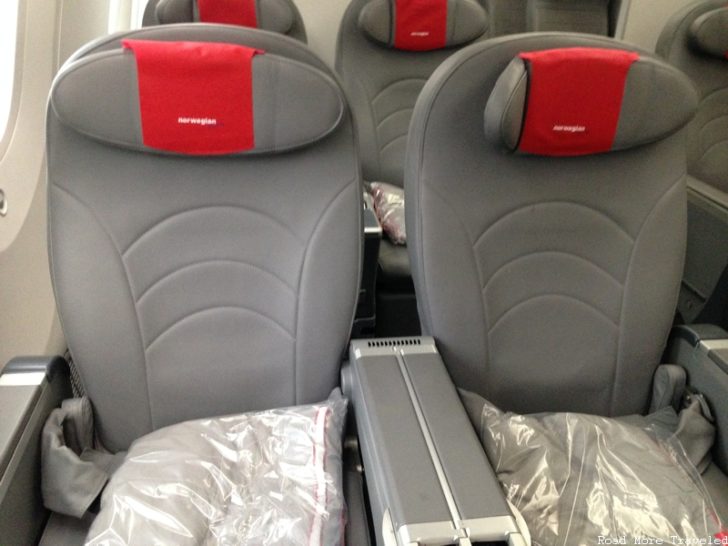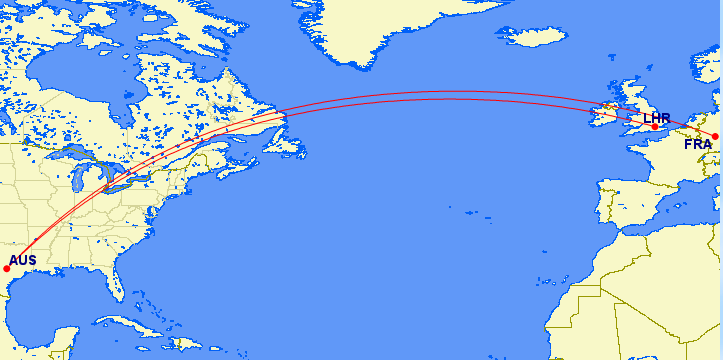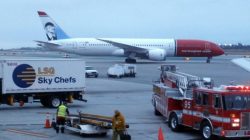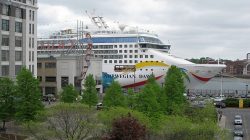Yesterday, Norwegian Air Shuttle announced two new nonstops to the US from London Gatwick. One route, to Chicago O’Hare, probably surprises no one. But the other might raise some eyebrows. Norwegian prepares to say howdy to Texas — but via the smaller Austin Bergstrom International Airport. Some may find it strange that the low-cost carrier chose AUS over Dallas or Houston. But despite Austin’s self-proclaimed title as the capital of weirdness, the Norwegian Air new Austin service actually makes a certain amount of sense.
Schedule and Pricing
Norwegian plans to operate its Austin-Gatwick service using a 3x weekly schedule as follows:
- DY7181 London to Austin departing 10:00AM arriving 2:05PM [Tues, Thur, Sat]
- DY7182 Austin to London departing 4:20PM arriving 7:25AM (+1 day) [Tues, Thur, Sat]
Service begins March 27, 2018, utilizing Boeing 787-9 aircraft. Presumably, Norwegian will use its standard long-haul configuration. This features 309 coach seats in a 3-3-3 configuration. Whereas for those who need more space, the aircraft has 35 “Premium Class” seats in a 2-3-2 configuration.

Meanwhile, Norwegian predictably offers attractive launch pricing on the new route. Fares start at $249.90 to London, and $348.20 on the return. Keep in mind, though, that Norwegian charges fees for pretty much everything. Therefore, expect to pay more all-in. If you want to splurge for Premium Class, I’m seeing fares from about $1,518 roundtrip. I sampled Norwegian Premium Class last fall. While it’s a perfectly reasonable product, whether $1,500 constitutes a good deal really depends. British Airways flies to Austin, and occasionally discounts Club World to that level. Also, don’t forget to play around with the country and currency settings to try and score a better price.
Expanded Transatlantic Offerings
Austin might be Texas’ capital city, but transatlantic service is quite limited. Today, Central Texas travelers have just two options — British Airways to London, or Condor to Frankfurt.
However, Austin can’t be looked at it a vacuum. The metro area encompasses several Central Texas counties, as well as San Antonio, 80 miles to the south. Many may not realize that San Antonio, not Dallas, ranks as the state’s second largest city. Combined, the Austin-San Antonio metro area boasts nearly 4 million people. While not as large as DFW or Houston, that’s still a healthy potential market. And yet, since San Antonio (SAT) has no transatlantic service, the entire market features just these two routes.
Why the lack of service? Easy — it’s just not that far to American’s and United’s mega-hubs at DFW and IAH, respectively. A short one hour flight to Dallas or Houston connects you to the world. Neither AA nor UA have much incentive to ramp up service at either AUS or SAT and possibly cannibalize their hubs. Based on that, perhaps Norwegian is in for a tough go of it in the River City?
Not a Totally Wacko Idea
I actually think this type of service is the smart way for Norwegian to approach things. First, starting a war with American and United at DFW and IAH isn’t likely to be fruitful. Norwegian simply can’t compete with the frequency, alliance benefits, and corporate contracts of the big boys. I highly doubt, though, that American and United are going to care much about a few flights a week from AUS. AA, for instance, coexists with a much more significant Spirit operation at DFW. In Austin, Norwegian might irritate BA, but that’s something they’ve proven adapt at in many markets. I also suspect you’re at least partially seeing a retaliatory response to BA entering Norwegian markets such as Oakland.
Plus, it’s not like Norwegian plans to operate daily flights with a 777 or A380. These are 3x weekly flights on a right-sized plane, the 787-9. Given the large population and high-tech presence in the Austin area, a few flights a week seems reasonable to meet demand. You’re basically going after leisure travelers that don’t want to fool with a connection in Dallas or Houston. That, and start-up owners that don’t have the travel budget for a legacy carrier. Other LCCs like Spirit and Allegiant have used this model successfully, and I’d wager it works here, too.
One other reason I think the service might work — Southwest. No, Southwest and Norwegian don’t have an interline agreement. But it is possible to cobble together connections. Norwegian will use two gates (2 and 3) in the main (Barbara Jordan) terminal. Southwest uses gates 7 through 12. Let’s say you’re a budget traveler from El Paso with only a carry-on bag to avoid Norwegian’s fees. It’s literally a 5-minute connection from the Southwest gates to Norwegian. Even if you did have to claim bags and then re-check, it’s still a far easier experience than connecting at DFW or Intercontinental. I doubt you’ll see more than a handful of passengers per flight connect this way, but that’s enough to potentially make a difference. (Yes, I do expect a handful of folks to try this. It’s amazing what some people do to save money, myself included.)
As for lounge access — no, there’s no contract lounge at Bergstrom, unlike DFW or IAH. But they do have an Amy’s Ice Cream stand in the terminal. Who needs a lounge when you can have Amy’s Ice Cream?
Final Thoughts
I’ve seen some skepticism on the internet, but overall I think the Norwegian Air New Austin Service can work. Texas-based budget travelers have a new, solid product to choose from on their next trip across the pond. And for those of you reading from London, Austin is a fun city. Probably my favorite in the state. Just help Keep Austin Weird by doing something like, I don’t know, buying a giant donut while you’re here.
Hey, if I can fly to London for a weekend for tea, you can return the favor…
H/t Daniel at One Mile at a Time.
Photo of Austin welcome sign: “2005Mar-AustinTypeTour-136 – Roadhouse Relics – Greetings From Austin Postcard” by Philip Kromer, via Flickr Creative Commons, license Attribution-ShareAlike 4.0 International (CC BY-SA 4.0).
Photo of ice cream: “Amy’s Ice Cream” by Wayne Truoung, via Flickr Creative Commons, license Attribution 4.0 International (CC BY 4.0).








